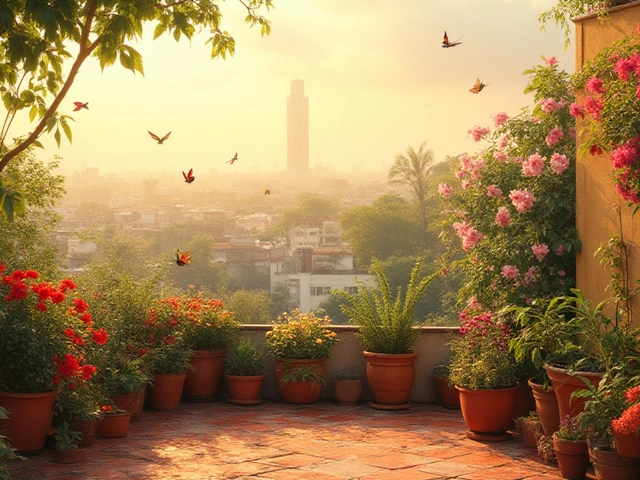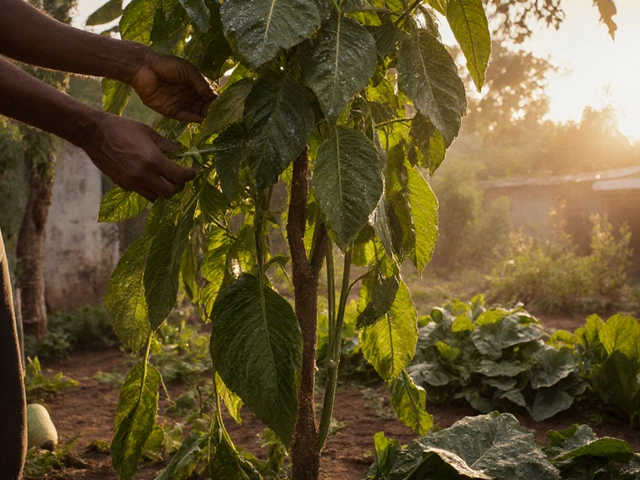Natural Perlite Alternatives for Better Soil
If you’ve used perlite before, you know it lightens soil, helps drainage, and lets roots breathe. But buying perlite can be pricey, and many gardeners want a greener option that’s easy to find locally. Luckily, there are several natural materials that do the same job without the cost or the carbon footprint of mined perlite.
Why Look for an Alternative?
First, perlite is a volcanic glass that needs to be heated to explode into tiny beads. That process uses a lot of energy, so a natural substitute reduces environmental impact. Second, in many parts of India, perlite isn’t stocked in small garden stores, making it a hassle to order online and wait weeks for delivery. Third, you might already have some of these alternatives right in your backyard or local market – sand, rice husks, or coconut coir. Using what’s nearby saves money and cuts down on waste.
Top Natural Substitutes
1. Rice Husk – After cleaning, rice husks are light, porous, and cheap. They improve drainage just like perlite and add a bit of organic matter as they break down. Mix a handful into potting mixes for seedlings or container plants.
2. Coconut Coir – Coir fibers are the fibrous part of coconut husk. They hold moisture while still letting excess water flow away. Soak coir chips, squeeze out extra water, and blend with soil. It’s especially good for indoor plants that need steady humidity.
3. Sand (Fine or Coarse) – While sand doesn’t add organic matter, it creates air pockets and prevents soil compaction. Use a 1:1 ratio of sand to regular potting mix for cactus, succulents, or any plant that hates soggy roots.
4. Pumice – Similar to perlite but naturally porous volcanic rock. It’s heavier than perlite, so pots stay stable, and it lasts longer. If you can find it in local nurseries, use it in the same amount as perlite.
5. Compost‑Enriched Peat Moss – Combining peat moss with well‑rotted compost gives a light, airy mix. It retains enough moisture for most houseplants while still draining well. Just remember peat isn’t as sustainable, so pair it with local compost.
When swapping perlite, start with the same volume and watch how quickly water drains. Adjust the mix if you notice water standing too long. For most Indian climates, a blend of rice husk and sand works wonders for vegetable beds, while coir is a favorite for indoor herb gardens.
Quick tip: If you’re using rice husks, toast them lightly in a pan for 5‑10 minutes. This kills any weed seeds and reduces the slight smell. It also makes the husks a bit more rigid, improving their aeration effect.
By experimenting with these natural alternatives, you’ll find a mix that fits your garden’s needs and your budget. The goal is the same – loose, well‑draining soil that lets roots explore without getting water‑logged. Give one of these options a try today, and you’ll see healthier growth without the extra cost of perlite.
Natural Alternatives to Perlite in Your Garden
While perlite is popular for soil drainage, there are natural alternatives that are eco-friendly and readily available to gardeners. This article explores various substitutes like sand, rice hulls, and pine fines that enhance soil structure and retain moisture effectively. Learn how these materials can benefit your plants without the environmental impact of mining perlite. Discover practical tips on using these alternatives to create optimal soil conditions for a thriving garden.
About
Soil Improvement
Latest Posts


Companion Planting: Growing Peppers and Cucumbers Together
By Alden Thorne Jan 6, 2025

Common Indoor Plant Care Mistakes You Should Avoid
By Alden Thorne Jan 3, 2025

Best Plants for Indian Summer: Top Choices for Surviving Heat & Drought
By Alden Thorne Jul 9, 2025

